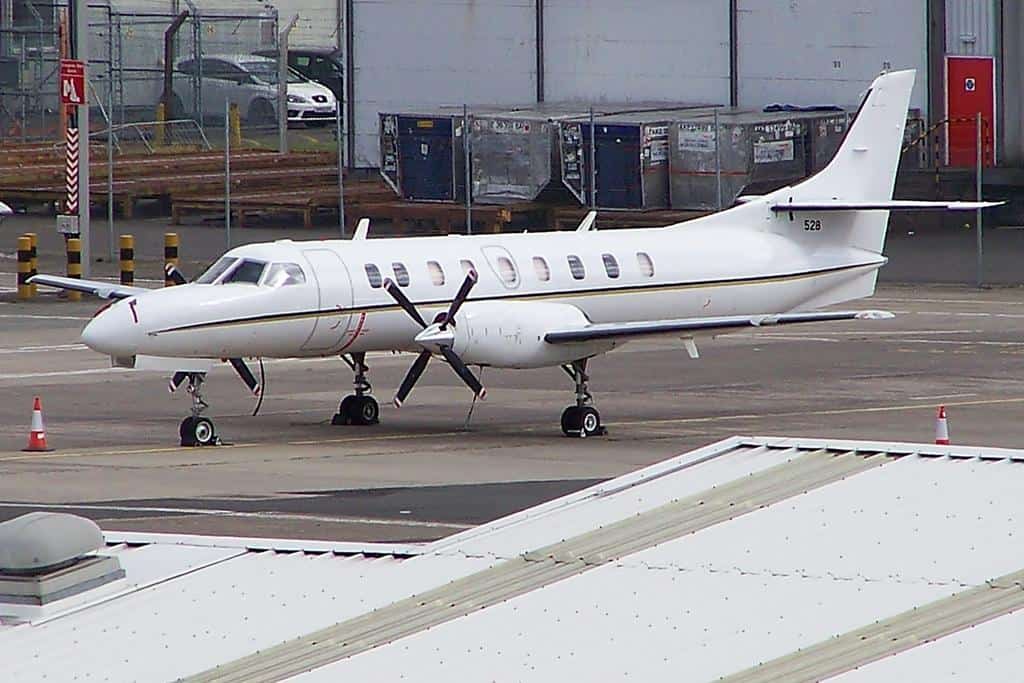
The U.S. Navy is home to one of the largest air forces in the world, second only to the U.S. Air Force. The backbone of the Navy’s arsenal of aircraft is the F/A-18E/F Super Hornet. These jets are equipped with advanced avionics and weapons systems and are designed for strike missions, air superiority, and aerial reconnaissance. These Super Hornets have proven to be essential in combat aircraft missions across the world. (These are the most widely used fighter jets on Earth.)
Here, 24/7 Wall St. is taking a closer look at the U.S. Navy’s fleet of aircraft. To identify the most widely used aircraft by the U.S. Navy, 24/7 Wall St. reviewed data from the 2024 World Air Forces report from FlightGlobal, an aviation and aerospace industry website, and ranked the aircraft by the number of units in active service. Additionally, we’ve included supplemental information on the type of aircraft, how many are in active service, top speed and armament. We have excluded training aircraft and helicopters from this list.
Another key component of the Navy’s fleet of aircraft is the EA-18G Growler. This fighter jet is designed specifically for advanced electronic warfare and is generally tasked with jamming enemy radar and communication systems. It is an essential aircraft for ensuring air superiority in contested environments. The Growler is another variation of the Super Hornet and it features advanced radar and onboard electronic systems that offer capabilities beyond just targeting.
There are a number of other aircraft with the Navy’s arsenal, each playing a unique and important role for the functionality of the military as a whole. (These are the U.S. Navy’s newest ships in June 2024.)
Here is a look at the most widely flown aircraft by the U.S. Navy:
Why Are We Covering This?

24/7 would like our readers to understand where their tax dollars are being spent. The Navy received $202.6 billion in government funding in 2024, second only to the Air Force at $216.1. billion. In fiscal year 2025, the Navy has requested $16.6 billion of its funding to purchase 75 aircraft and helicopters, which is actually slightly less than in 2024.
14. C-20 Gulfstream IV

- Type: Military VIP passenger transport aircraft
- Year introduced: 1983
- Active aircraft: 2
- Top speed: 582 mph
- Armament: N/A
13. C-26D Metroliner
- Type: Transport aircraft
- Year introduced: 2003
- Active aircraft: 8
- Top speed: 331 mph
- Armament: N/A
12. KC-130 Super Hercules
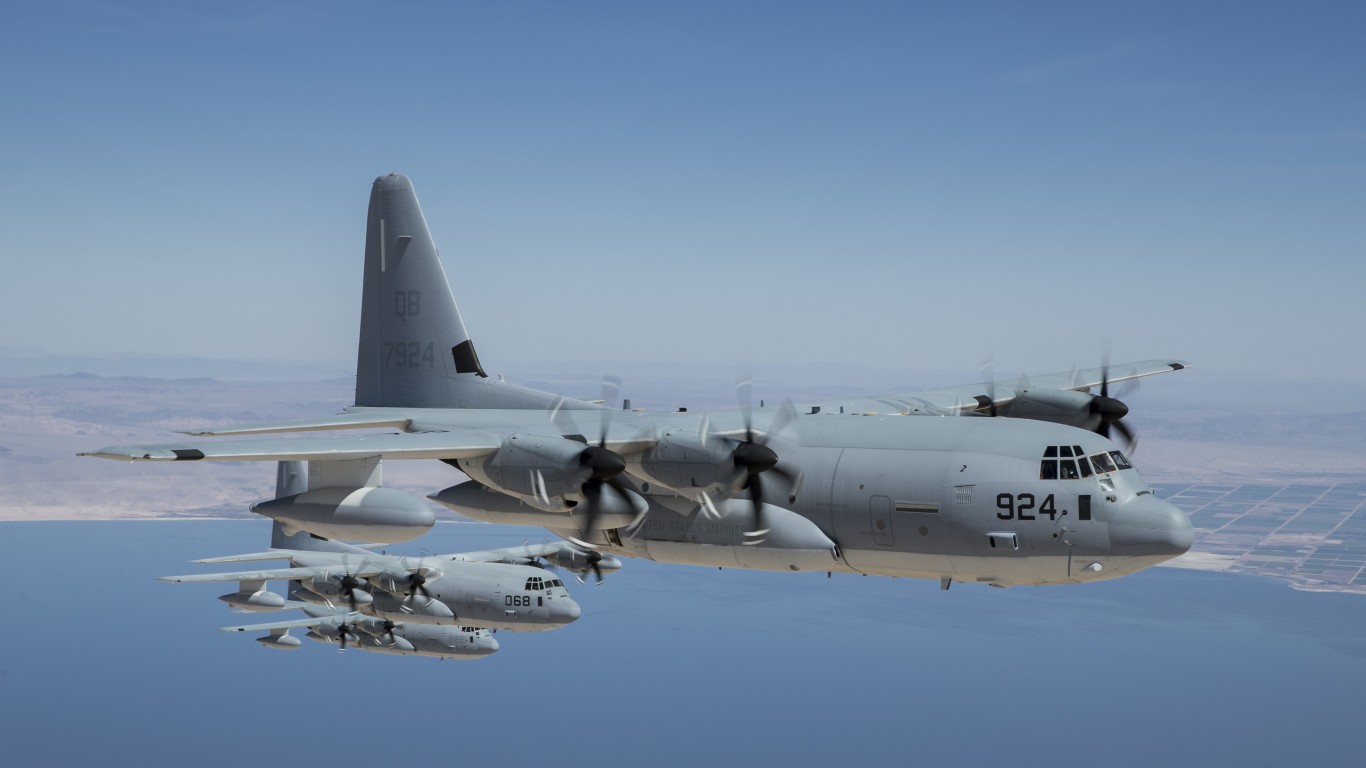
- Type: Aerial tanker / transport aircraft
- Year introduced: 1962
- Active aircraft: 11
- Top speed: 416 mph
- Armament: N/A
11. C-12 Huron

- Type: Special mission aircraft
- Year introduced: 1974
- Active aircraft: 13
- Top speed: 332 mph
- Armament: N/A
10. E-6B Mercury

- Type: Airborne command post
- Year introduced: 1989
- Active aircraft: 16
- Top speed: 603 mph
- Armament: N/A
9. C-40 Clipper
- Type: Transport aircraft
- Year introduced: 2001
- Active aircraft: 17
- Top speed: 544 mph
- Armament: N/A
8. P-3 Orion

- Type: Multimission reconnaissance, anti-submarine aircraft
- Year introduced: 1962
- Active aircraft: 17
- Top speed: 466 mph
- Armament: Torpedoes, depth charges, Harpoon missiles, SLAM-ER missiles, Maverick missiles, naval mines, unguided rockets
7. C-130J Super Hercules
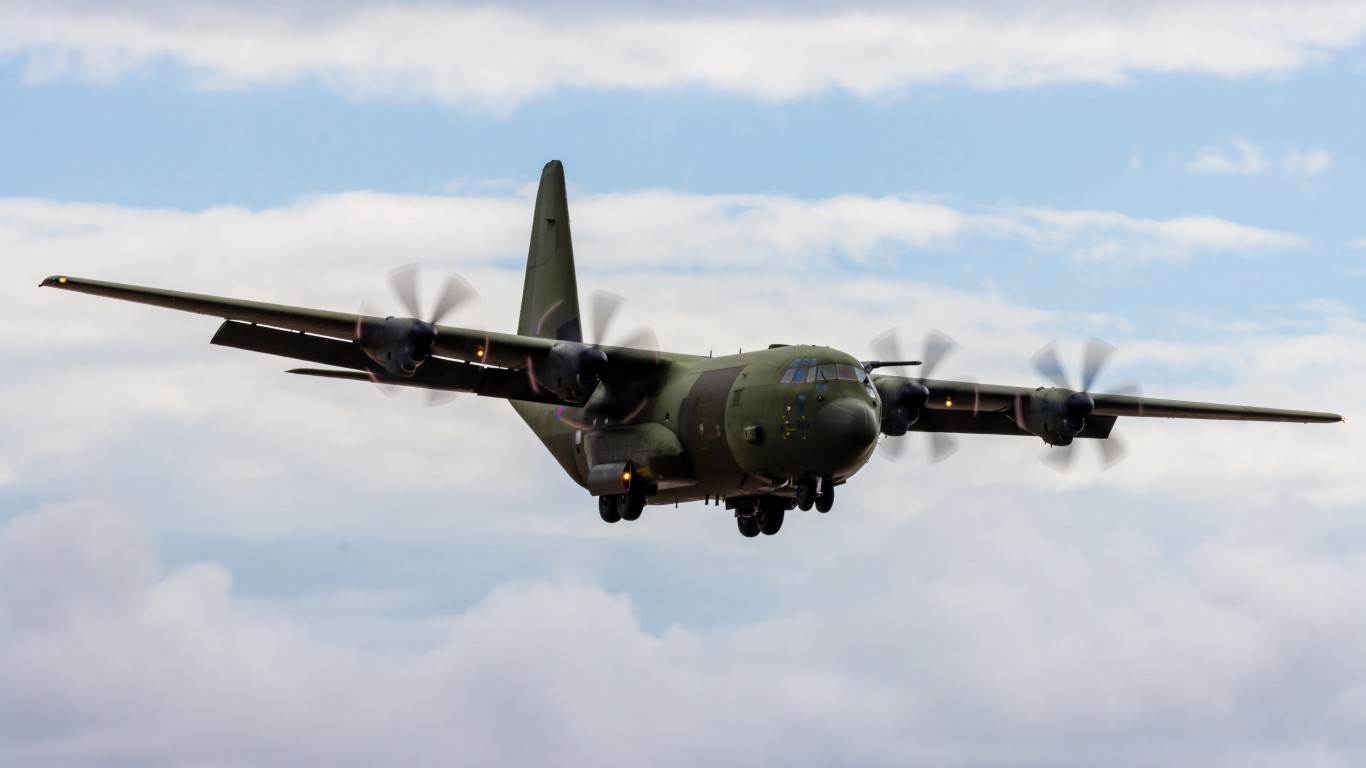
- Type: Tactical medium transport aircraft
- Year introduced: 1999
- Active aircraft: 18
- Top speed: 416 mph
- Armament: N/A
6. C-2 Greyhound

- Type: Carrier-based cargo / transport aircraft
- Year introduced: 1967
- Active aircraft: 26
- Top speed: 331 mph
- Armament: N/A
5. F-35C Lightning II
- Type: Multirole fifth generation strike fighter aircraft
- Year introduced: 2016
- Active aircraft: 30
- Top speed: 1,199 mph
- Armament: 25mm GAU-12/U cannon in external pod, Sidewinder missiles, Paveway guided bombs, Rockeye II bombs, Brimstone missiles, Stormshadow missiles, drop bombs
4. E-2 Hawkeye
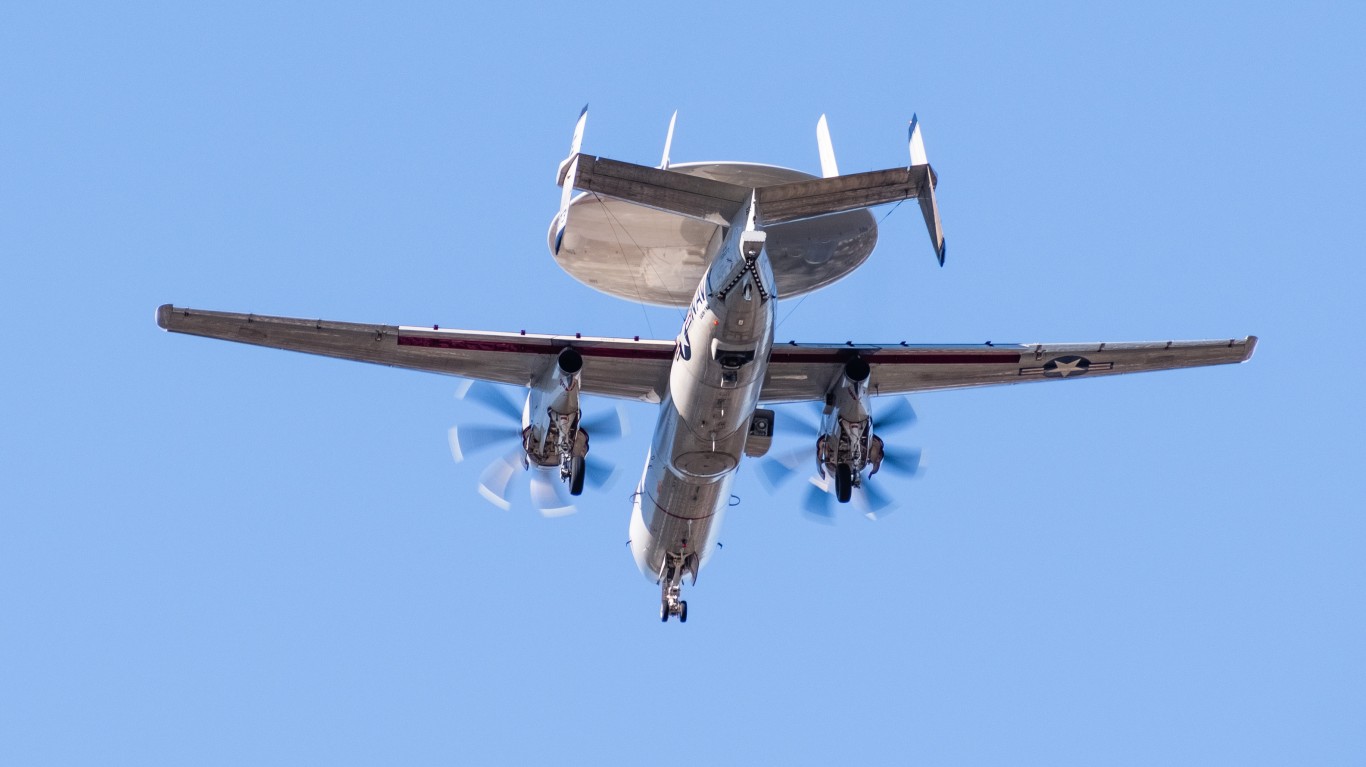
- Type: Airborne command post
- Year introduced: 1964
- Active aircraft: 83
- Top speed: 375 mph
- Armament: N/A
3. P-8A Poseidon
- Type: Multimission reconnaissance, anti-submarine aircraft
- Year introduced: 2013
- Active aircraft: 118
- Top speed: 490 mph
- Armament: Torpedoes, naval mines, air-to-surface missiles, anti-ship missiles, stand-off cruise missiles
2. EA-18G Growler
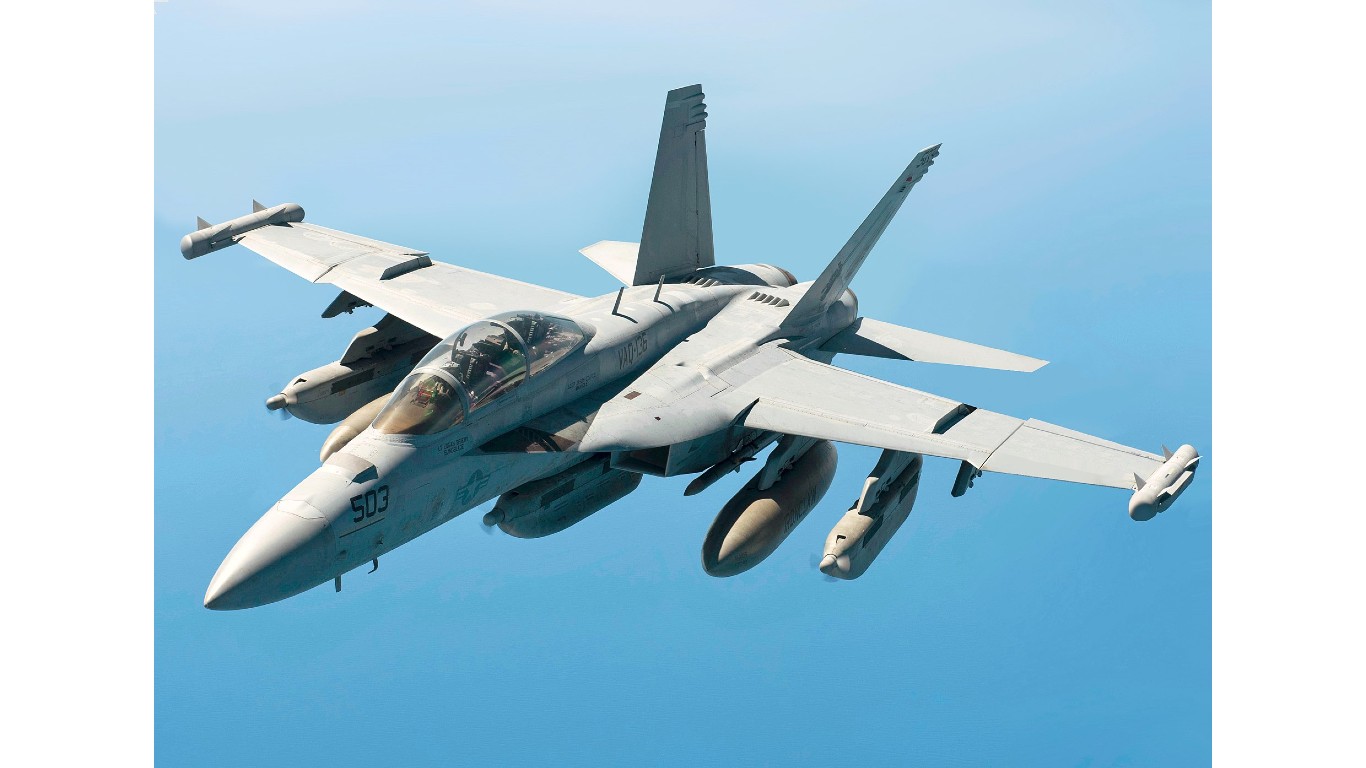
- Type: Carrier-based electronic warfare aircraft
- Year introduced: 2009
- Active aircraft: 153
- Top speed: 1,181 mph
- Armament: Detection pods, high band jamming pods, low band jamming pods, AN/ASQ-228 ATFLIR, SHARP, Harm missiles, AMRAAM missiles, Joint stand-off weapons
1. F/A-18 Super Hornet
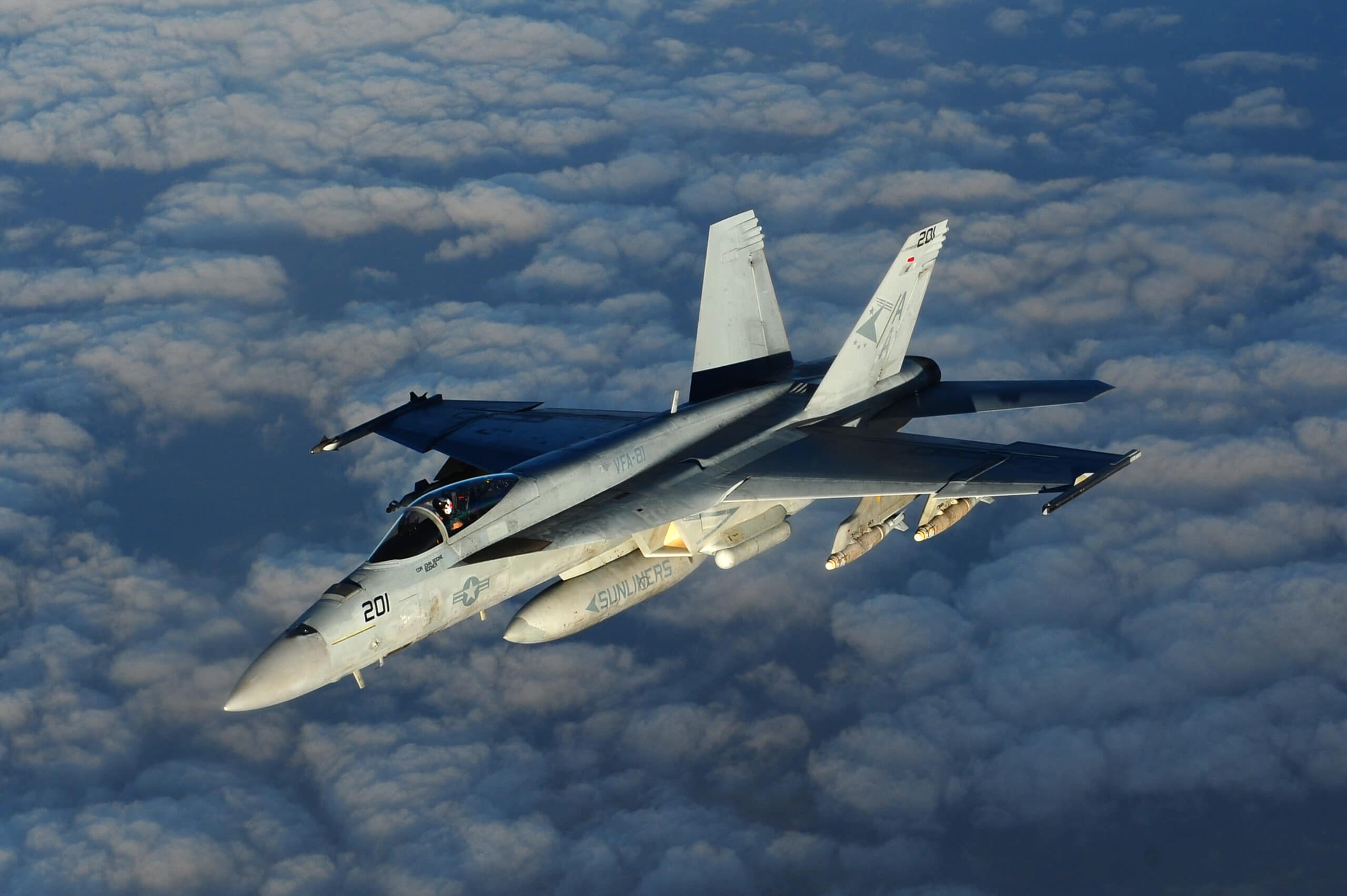
- Type: Carrier-based strike fighter aircraft
- Year introduced: 1999
- Active aircraft: 421
- Top speed: 1,187 mph
- Armament: 20mm M61A1 Vulcan automatic cannon, Sidewinder missiles, AMRAAM missiles, Harpoon missiles, HARM missiles, Maverick missiles, joint direct att munitions, Rockeye II bombs, general purpose bombs
Get Ready To Retire (Sponsored)
Start by taking a quick retirement quiz from SmartAsset that will match you with up to 3 financial advisors that serve your area and beyond in 5 minutes, or less.
Each advisor has been vetted by SmartAsset and is held to a fiduciary standard to act in your best interests.
Here’s how it works:
1. Answer SmartAsset advisor match quiz
2. Review your pre-screened matches at your leisure. Check out the advisors’ profiles.
3. Speak with advisors at no cost to you. Have an introductory call on the phone or introduction in person and choose whom to work with in the future
Get started right here.
Thank you for reading! Have some feedback for us?
Contact the 24/7 Wall St. editorial team.
